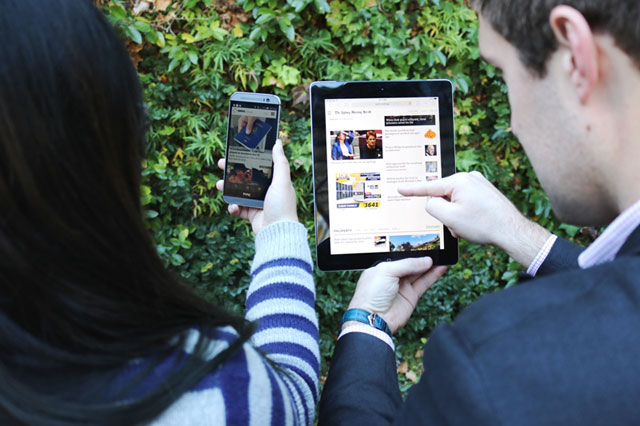News blues: over half of Australians avoid the news

If you try to evade the news like the plague then you are not alone! According to a new University of Canberra report, more than half of adult Australians avoid the news occasionally or often.
Some of the main reasons cited by those who avoid the news are that news can have a negative effect on mood; news can't be relied upon to be true; and/or that people didn't feel that there is anything they can do about news stories.
The Digital News Report: Australia 2017, published by the University of Canberra’s News and Media Research Centre (N&MRC) also shows that more women (53%) than men (45%) find that news can have a negative effect on their mood, and more men (18%) than women (11%) avoid news that can lead to arguments.
The report, which is now in its third year, is based on a survey of over 2,000 adult news consumers in Australia and is part of a global study of 36 territories coordinated by the Reuters Institute for the Study of Journalism at the University of Oxford.
Lead author and Director of the N&MRC, Dr Jerry Watkins, said the report highlights the complicated issues emerging around trust in news.
“Australians can and do access a wide range of news content across a range of traditional and digital platforms,” Dr Watkins said.
Less than half of adult Australians actually trust the news that they choose to watch, read, or listen to.
“Social media continues to grow as the preferred main source of news for younger Australians, yet less than a third of under-35 year olds say that news on social media helps them to distinguish fact from fiction. It's likely that fake news and an increasingly polarised media landscape are contributing to this unexpectedly high level of news avoidance, which is a particularly worrying sign," he said.
Other key findings from the report include;
- 63% of Australians are extremely or very interested in the news;
- Over a third of 18-24 year olds (38%)use social media as their main news source, while 32% of 25-34 year olds prefer news websites; and
- Australians are most interested in 'news about my region, city or town' followed by 'international news' and 'news about crime, justice and security.'
This year is the first time that the report has featured an analysis of gender and news. It found that more men are consuming online news while in the bathroom or toilet than women accessing news sites at work.
Gender-specific findings include:
- More men (32%) access online news than women (22%);
- More women (41%) prefer television news coverage than men (34%); and
- Men share news articles via email, whereas women prefer social media or sharing face-to-face.
Director of the University of Canberra’s 50/50 by 2030 Foundation and report co-author, Virginia Haussegger, said the nature of news consumption among women is changing.
The 24/7 news cycle, the proliferation of news platforms and the new modes of news- sharing have given many women the freedom to choose how, when and where they consume news in a way they were unable to do previously.
The report also found that television is the main source of news for people aged 55 and older, with 45 per cent of 55-64 year olds turning on the box for the news – a figure that increased to 50 per cent in those aged 65 and over. Yet according to the research, Australian audiences believe TV news is not the best at unpacking complex issues or providing strong views and opinions.
Download the full report via www.canberra.edu.au/nmrc
Words by Marcus Butler

